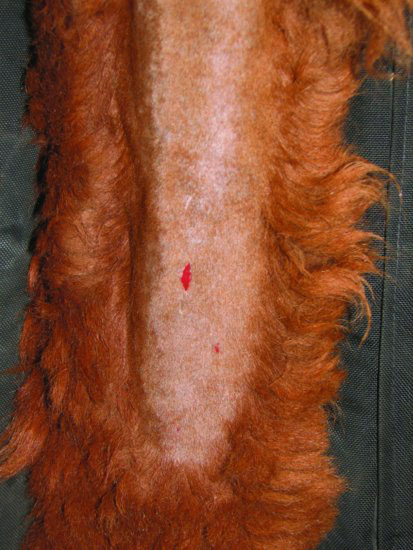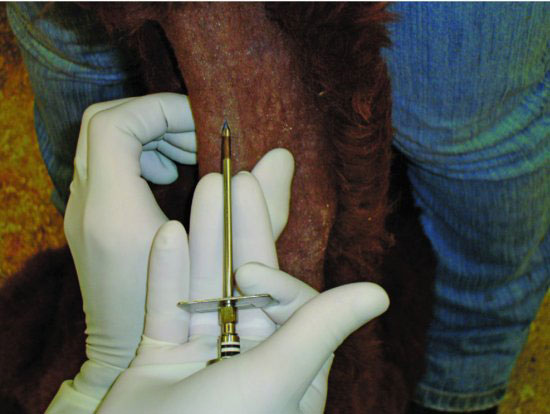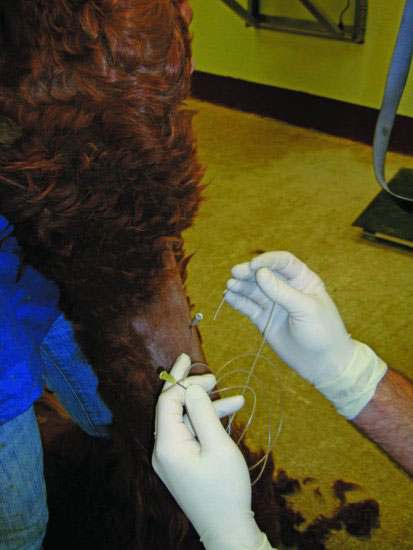Stabilize the trachea and make a small stab skin incision with a scalpel blade through the skin. (See Figure 35.1 and Figure 35.2.) If using a hypodermic needle instead of a nested trocar, the stab incision is not necessary; however, see cautions regarding needle use at the end of this text. Insert the nested trocar through the incision and an annular ligament between the tracheal rings into the lumen of the trachea and remove the inner stylette, leaving the cannula in place. (See Figure 35.3.) Attach a sterile syringe and aspirate to determine correct lumen positioning by no evidence of air resistance. Pass the polyethylene tubing through the stylette into the lumen of the trachea and advance until resistance is apparent. (See Figure 35.4 and Figure 35.5.)
Figure 35.2 Stab incision made through the skin for insertion of nested trocar. Stab incision is not necessary when using a needle as the entry port to tracheal lumen.

Figure 35.3 Nested trocar set used for insertion into the tracheal lumen between annular rings. The stylet is removed after penetrating the lumen, the catheter is passed, a syringe is attached and suction applied by withdrawing the plunger. Intraluminal placement is proper when air can be withdrawn without resistance.

Figure 35.4 The polyethylene tubing is being placed through the bore of the needle. Note that the 20-gauge needle has been inserted in the lumen of the tubing for syringe attachment.

Stay updated, free articles. Join our Telegram channel

Full access? Get Clinical Tree


